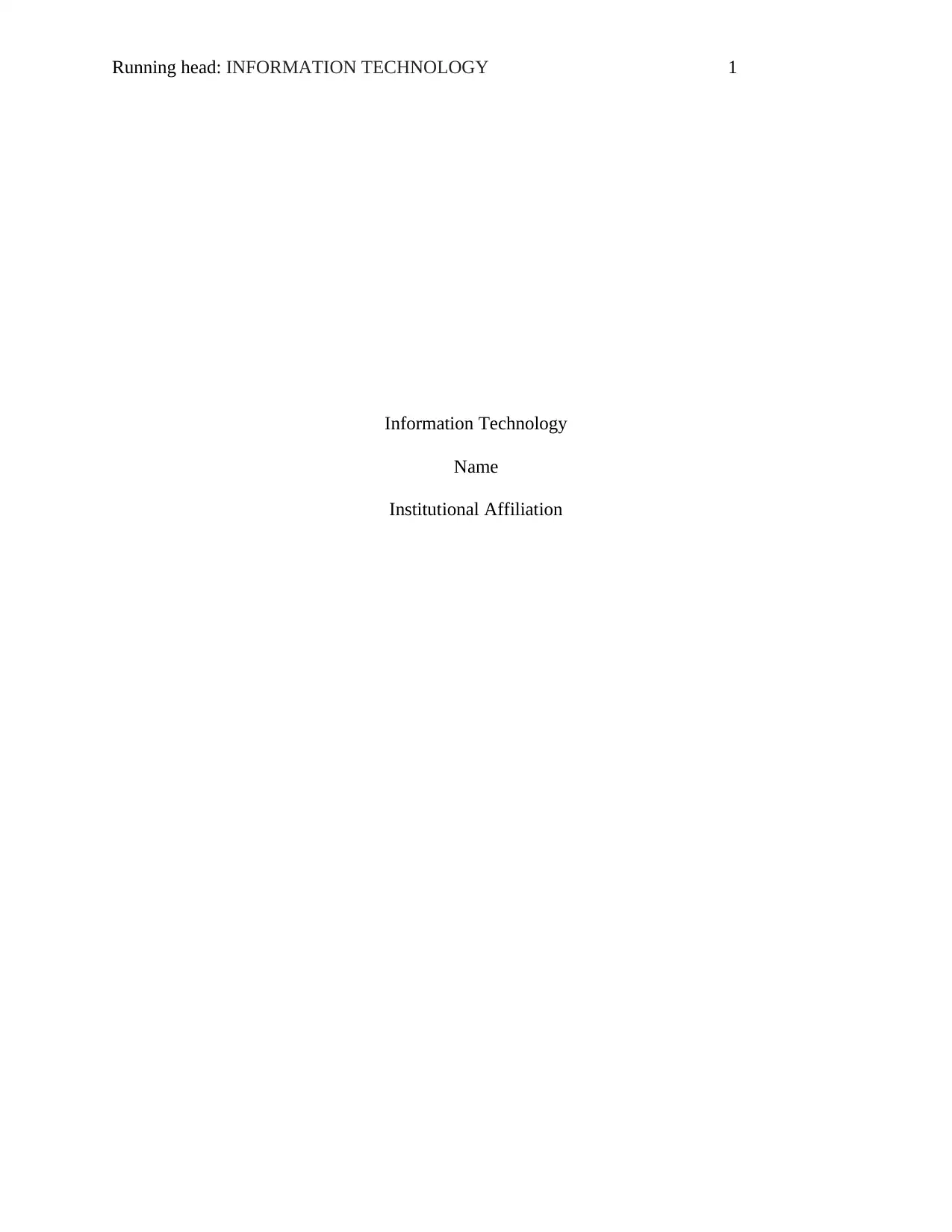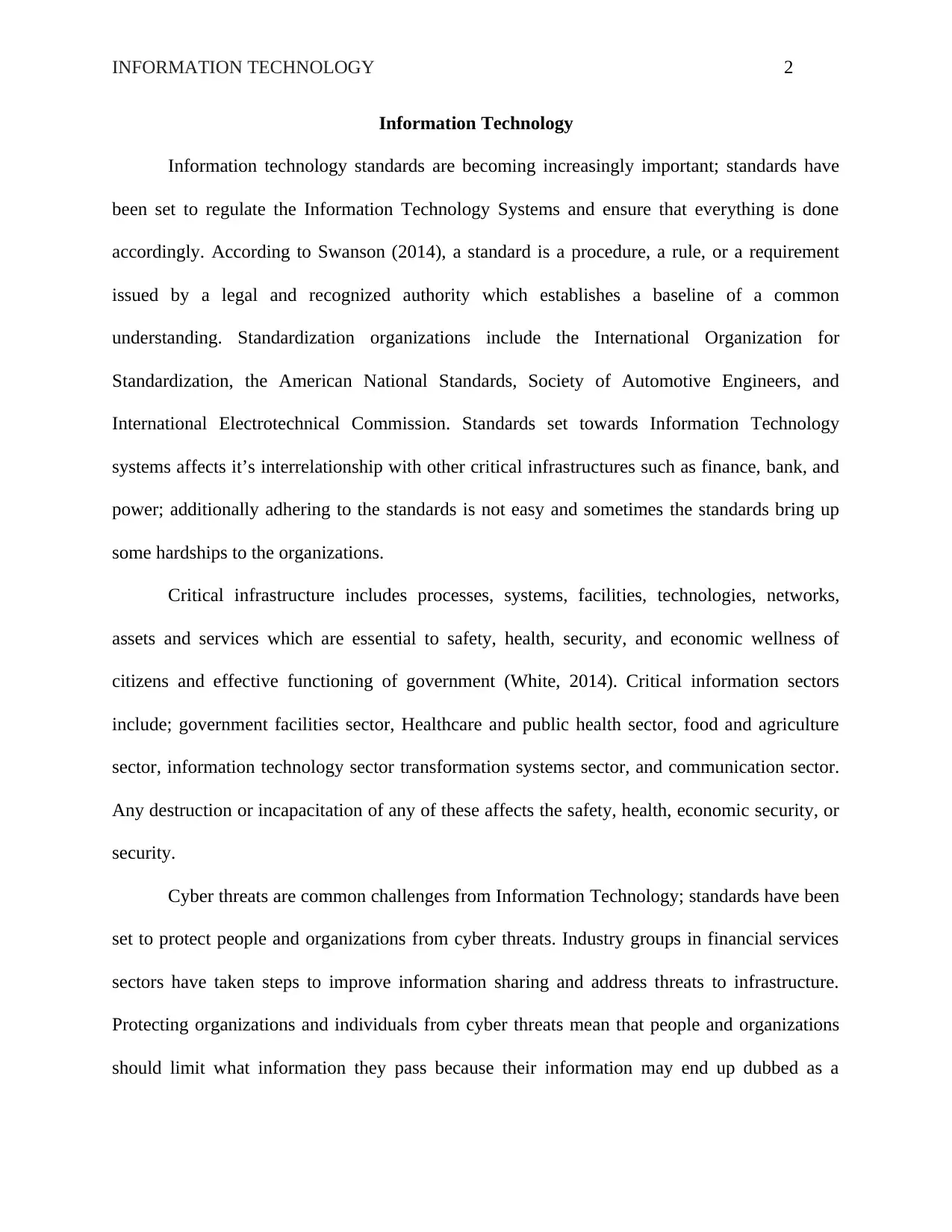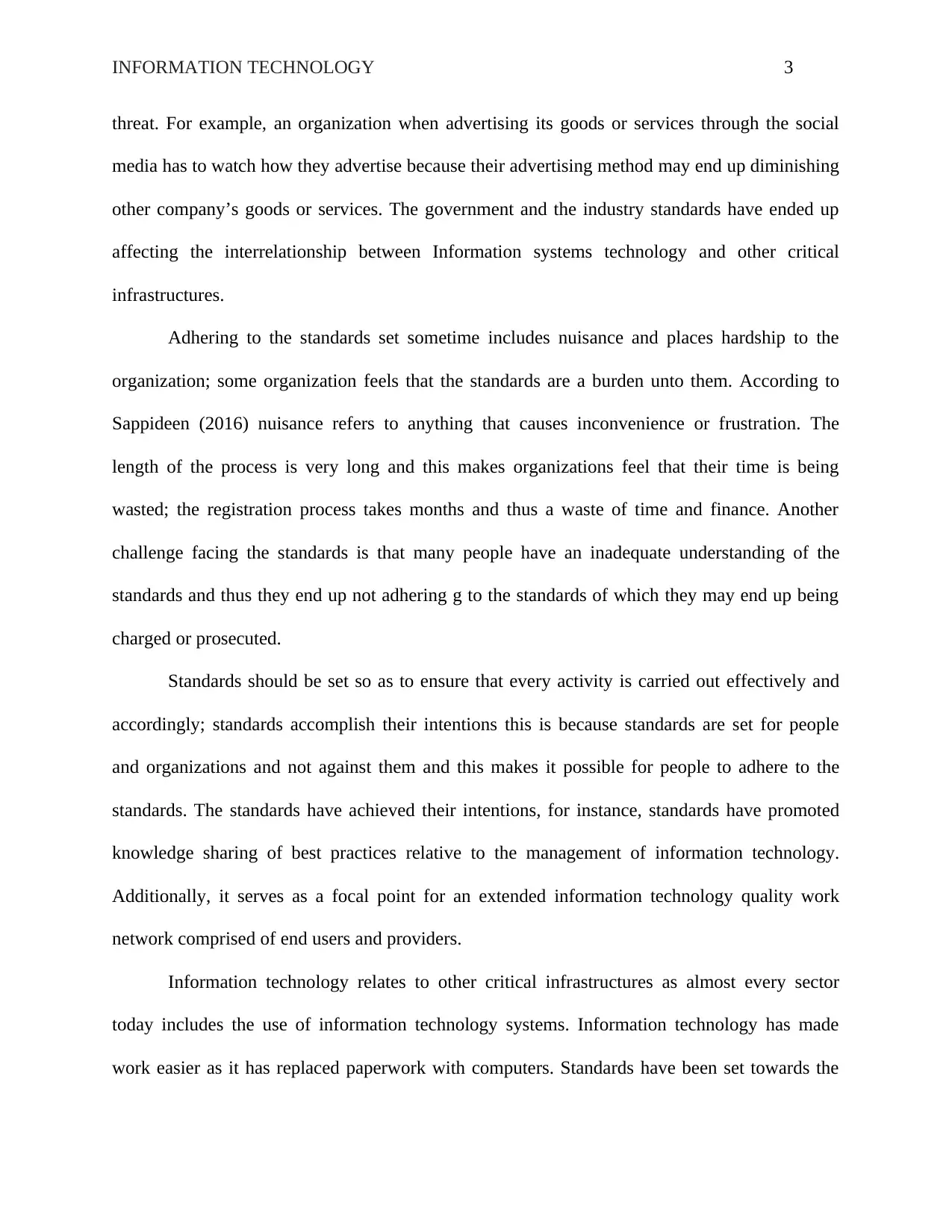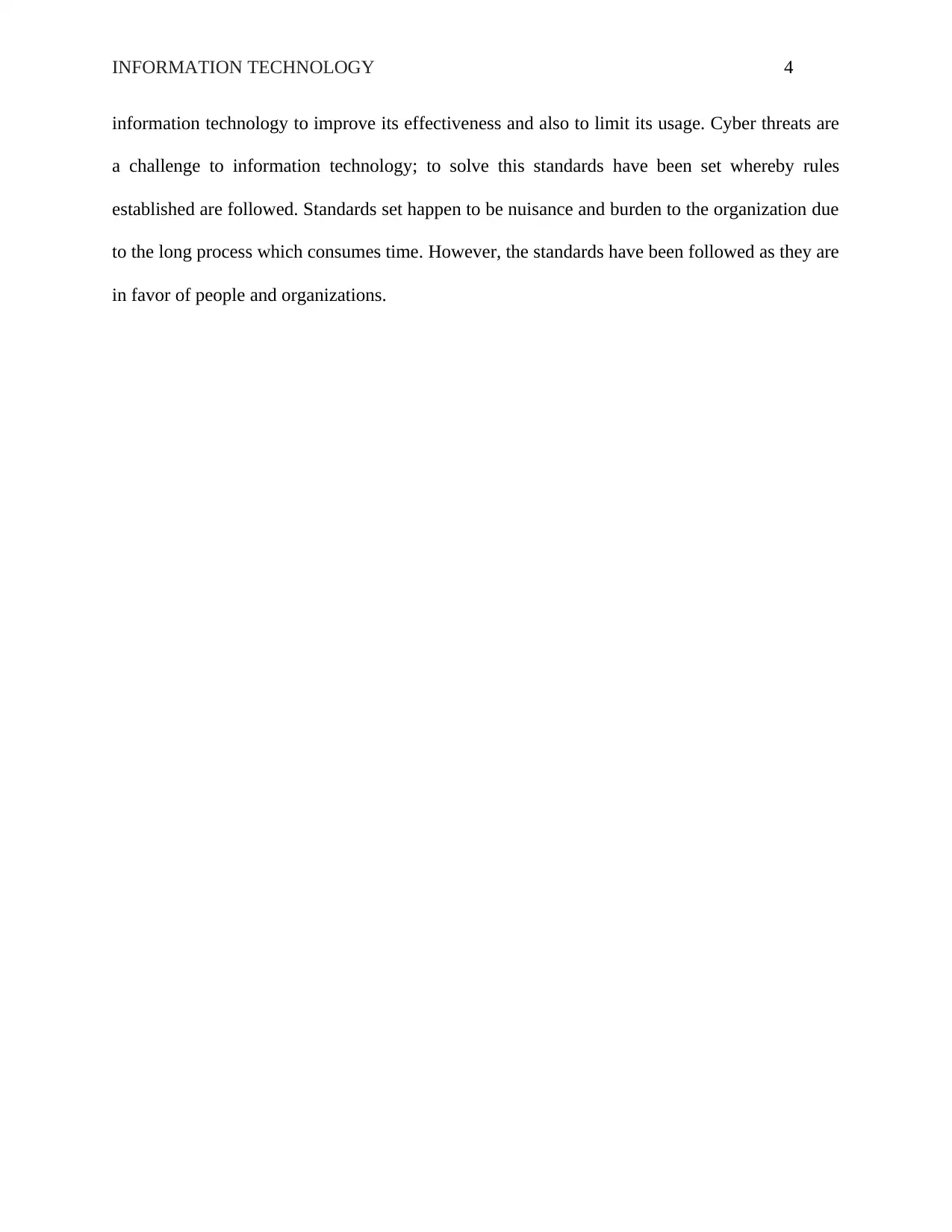Analysis of Information Technology Standards and Cyber Threats
VerifiedAdded on 2023/06/11
|5
|760
|174
Report
AI Summary
This report delves into the significance of information technology (IT) standards, highlighting their role in regulating IT systems and ensuring effective operations. It explores the influence of standardization organizations like ISO and NIST, emphasizing the interrelationship between IT and critical infrastructures such as finance, banking, and power. The report acknowledges the challenges of adhering to IT standards, including the potential for organizational burdens and the long registration processes. It also addresses the prevalence of cyber threats and the measures taken to mitigate them, such as information sharing within the financial sector. The report concludes by emphasizing the positive impact of IT standards, including promoting knowledge sharing and establishing quality work networks. It underscores the pervasive integration of IT across various sectors and its contribution to enhanced efficiency. Despite the challenges, the report asserts that the standards are ultimately beneficial for organizations and individuals, promoting effective and secure IT practices.
1 out of 5












![[object Object]](/_next/static/media/star-bottom.7253800d.svg)